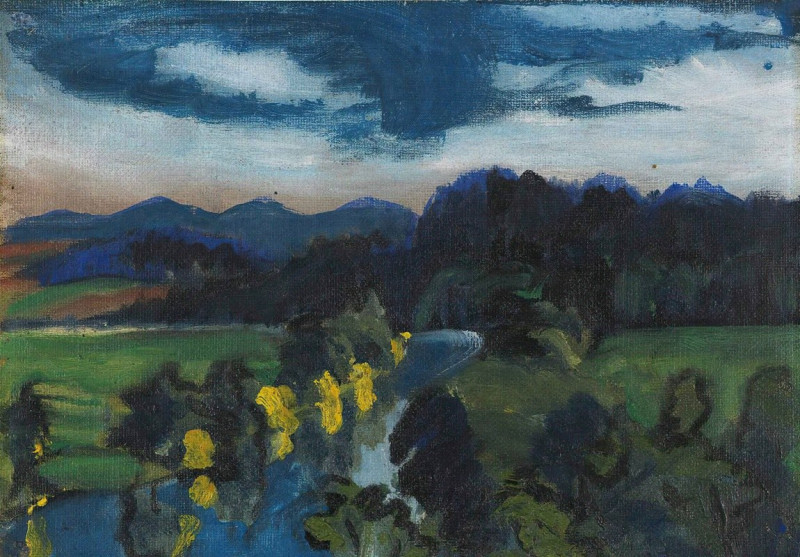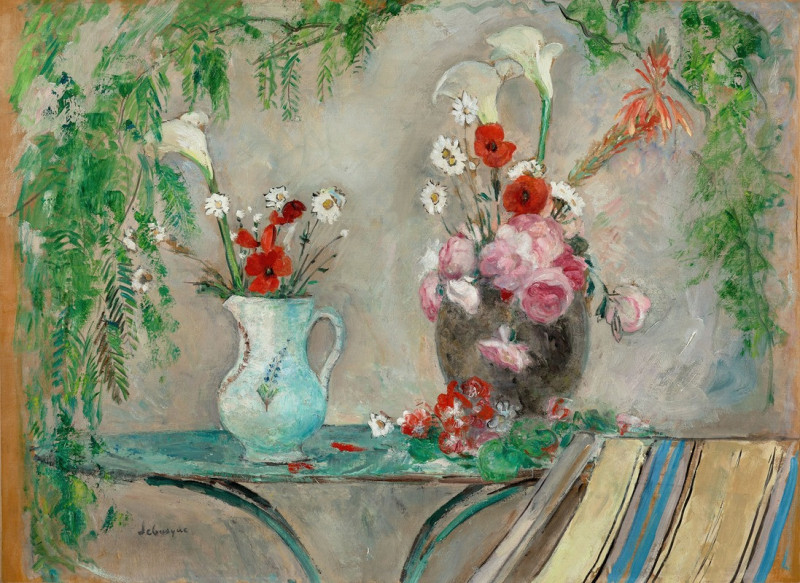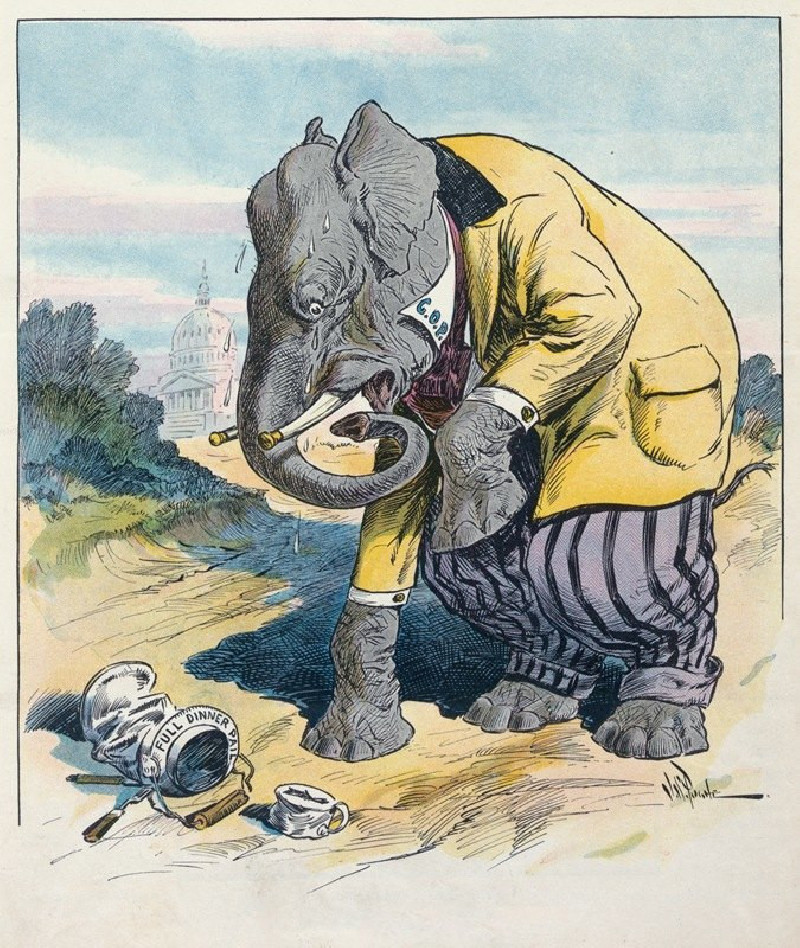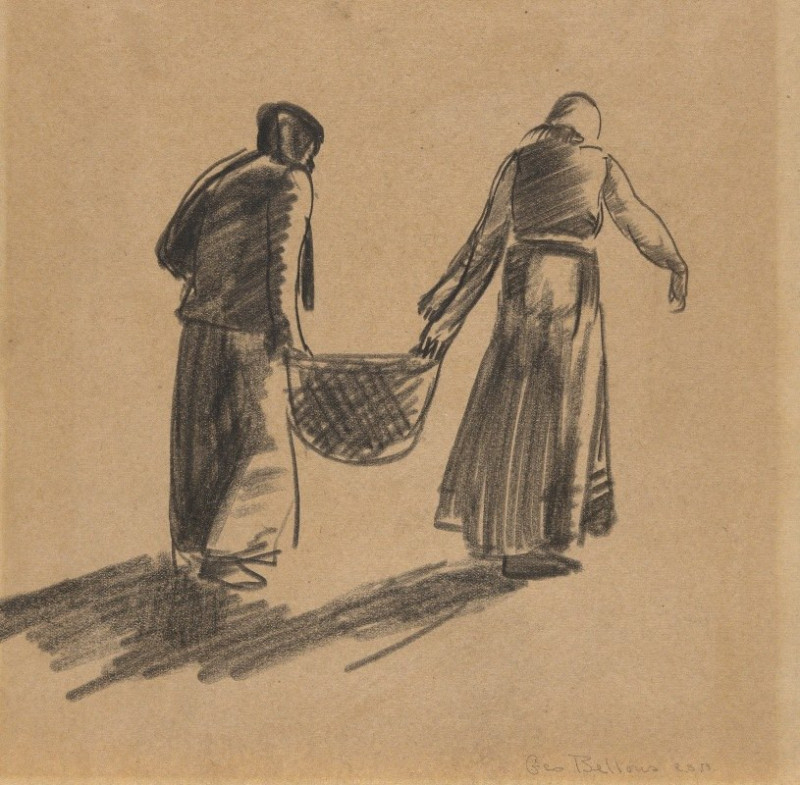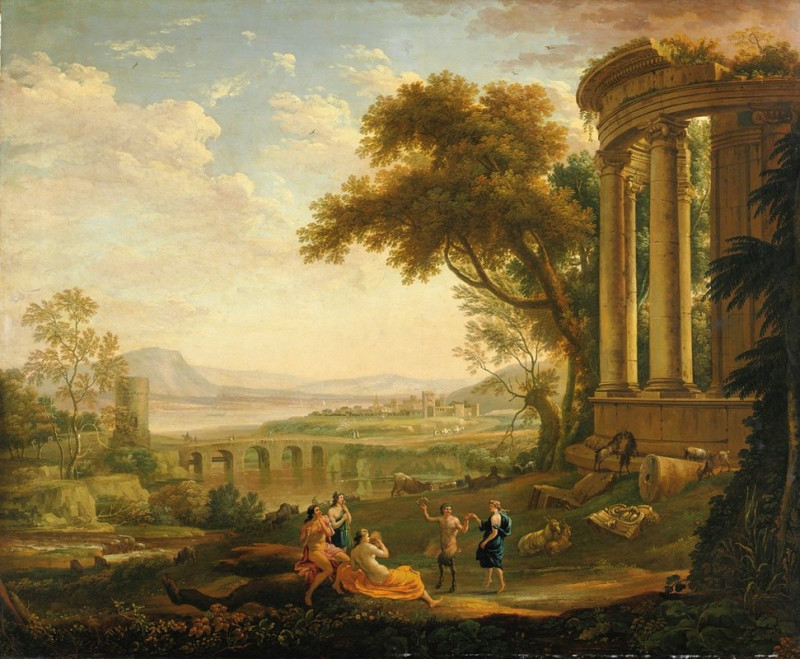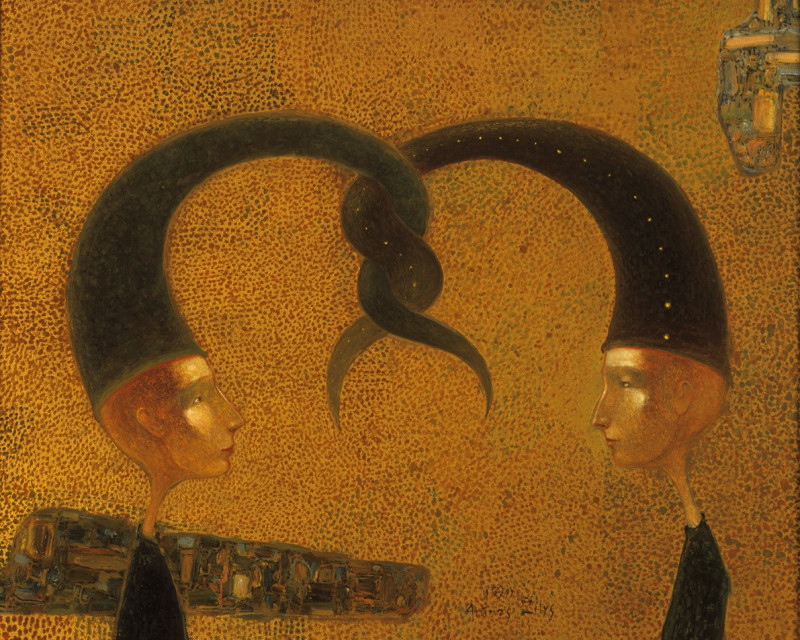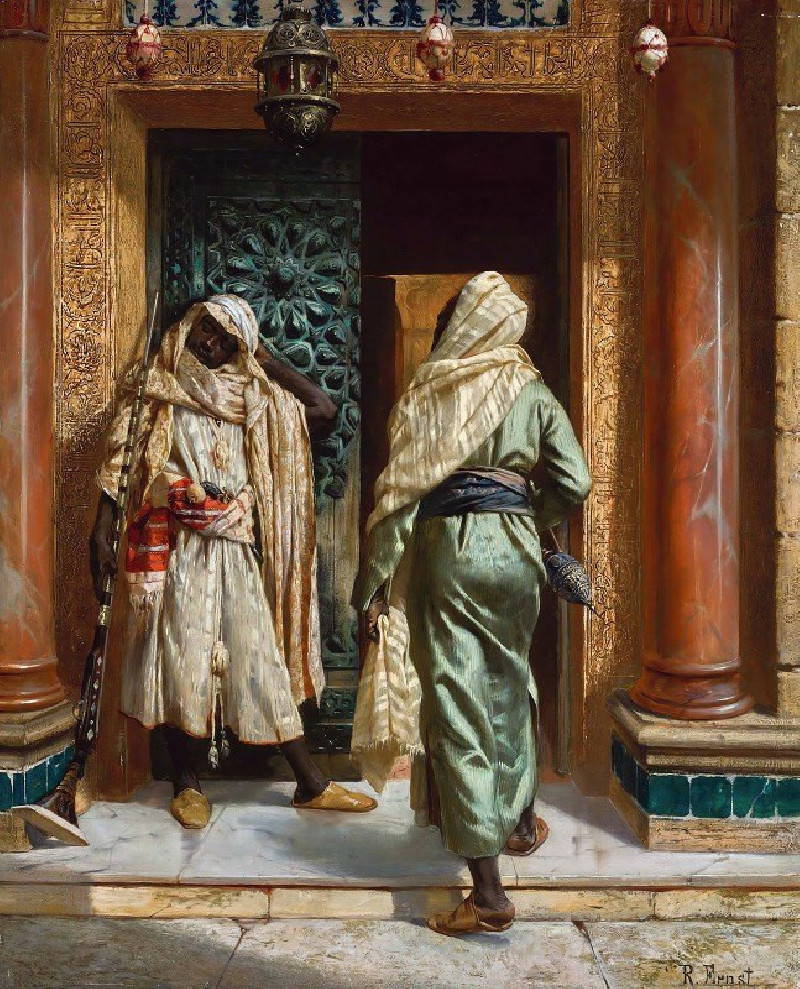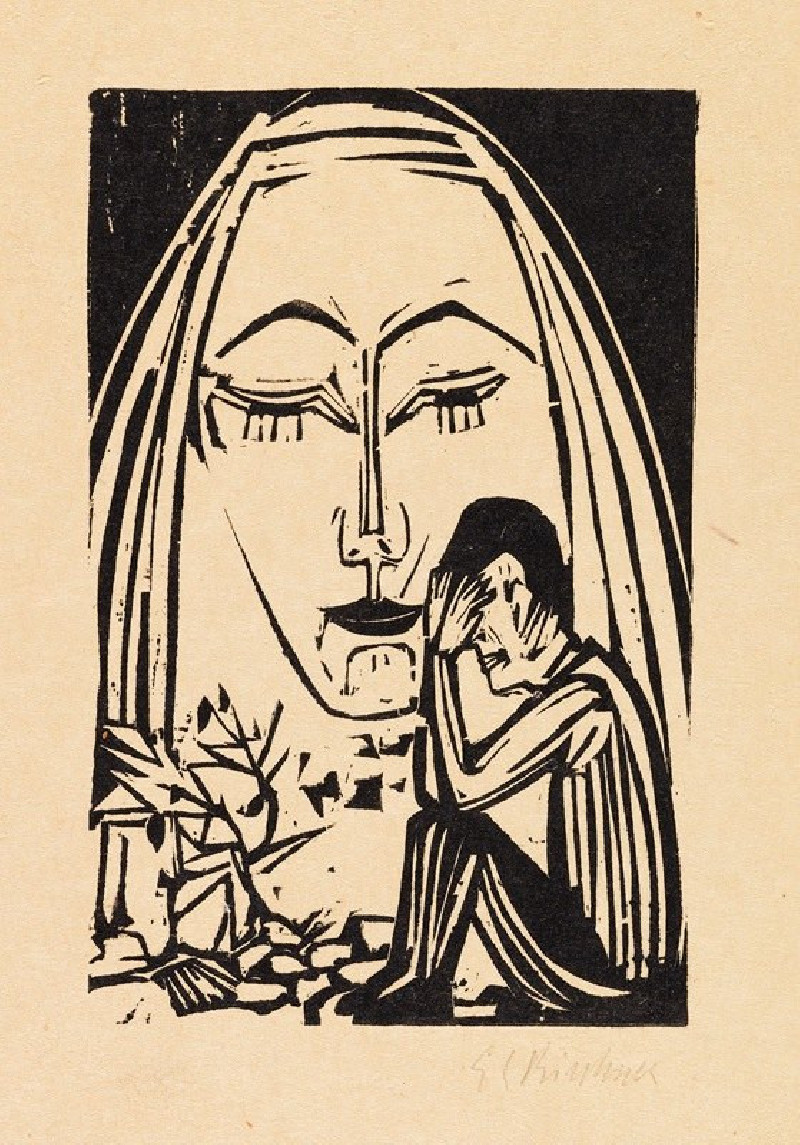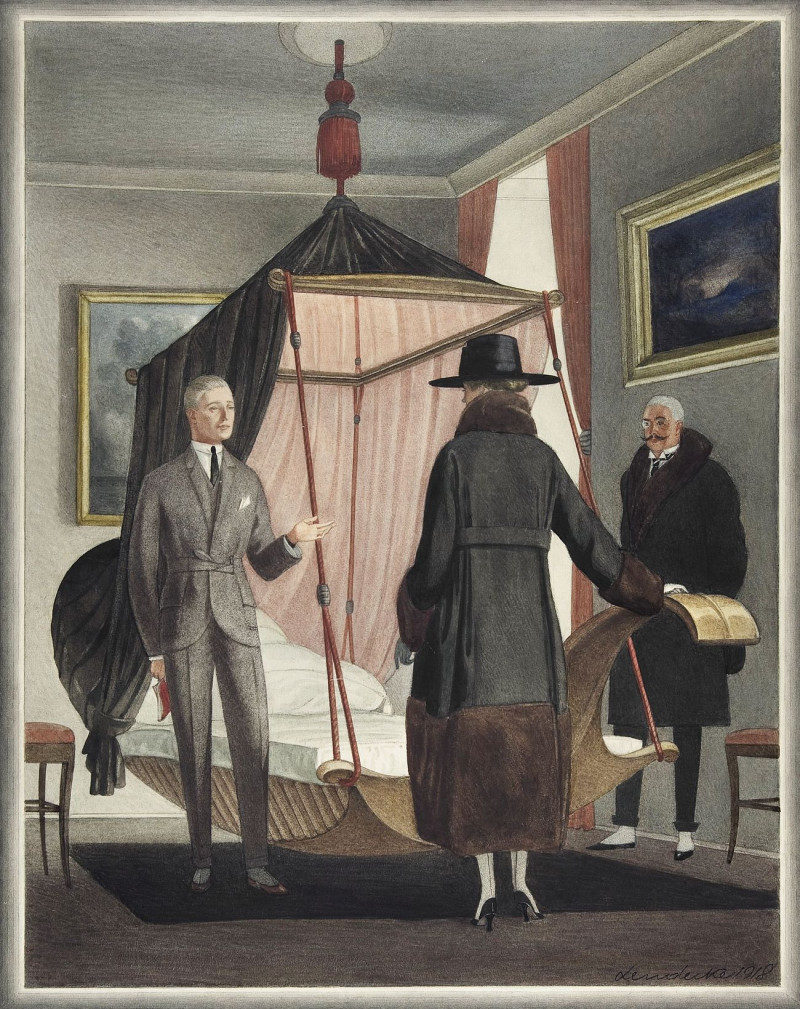Die Mulde bei Lichtenwalde (1903-20)
Technique: Giclée quality print
Recommended by our customers
More about this artwork
Discover the captivating atmospheres pulsing throughout Ernst Ludwig Kirchner's artwork in "Die Mulde bei Lichtenwalde" (The Mulde at Lichtenwalde), painted between 1903 and 1920. This landscape offers a vivid portrayal of the serene Mulde river, ensconced within the lush embrace of Lichtenwalde's verdant surroundings.The painting reveals Kirchner's adeptness with color and his unique take on German Expressionism, focusing on the emotive power of natural scenes. The foreground lushness, marked by dark, vigorous brush strokes, contrasts dynamically with the placid blue and grey swaths representing the river, contributing to a profound sense of depth and movement. The background's muted mountains blend harmoniously with amber twilight hues, evoking a tranquil yet moody atmosphere.In "Die Mulde bei Lichtenwalde," Kirchner's pioneering technique plays with the interaction of light and shade, forming layers that draw the viewer deeper into a contemplative engagement with the natural world. This masterpiece, transcending mere representation, echoes the artist’s internal conflicts and romantic leanings toward the beauty and solace offered by untouched landscapes.Explore this exquisitely rendered scene and get lost in the swirling emotions and vibrant energy that characterize Kirchner's artistic expression.
Delivery
Returns
Ernst Ludwig Kirchner (1880–1938) was one of the most important German Expressionist painters. He was a co-founder of Die Brücke, a group of German expressionist artists formed in Dresden in 1905. Die Brücke and Kirchner took inspiration from Vincent Van Gogh and Edvard Munch, as well as African and Oceanic art. They used woodblock printing as a medium to showcase their signature style: flat, unrealistic images with vivid colors. The recurring themes in Kirchner's artworks included exotic cultures, faraway landscapes, self-portraits, dancers and Berlin street life. His paintings and prints effectively portrayed non-European cultures despite the fact that he never traveled outside of Europe.

